Abstract
The organization of the newborn's brain and the nature of the effects of toxins and pollutants conspire to produce complex and difficult problems for the assessment of the behavioral effects of environmental agents. The newborn's brain can be characterized as relatively undifferentiated, and more vulnerable to, but potentially more capable of recovery from, the effects of environmental agents specific to this time period than it will be later in development. Environmental agents tend to have nonspecific, possibly subtle, effects that invade many areas of newborn functioning. These characteristics of the newborn and the behavioral effects of teratogens make assessment at this point in development difficult. Further exacerbating this difficulty is the nature of development. Development is critically dependent on the care the newborn receives. Distortions of a newborn's behavior can produce disturbances in the caretaking environment, and these caretaking disturbances can amplify the original behavioral distortion and produce other distortions. Attention to these types of effects must be built into an assessment. These considerations lead to the conclusion that an apical assessment of newborn behavior is required. The most standardized, valid, and reliable instrument currently available is the Neonatal Behavioral Assessment Scale developed by Brazelton. It assesses the integrated actions of the infant that function to regulate simultaneously the infant's internal state and exchanges with the animate (caretaking) and inanimate environment. The scale uses a set of reflex and behavioral items to assess the critical domains of infant functioning (e.g., the infant's ability to control his states of consciousness).(ABSTRACT TRUNCATED AT 250 WORDS)
Full text
PDF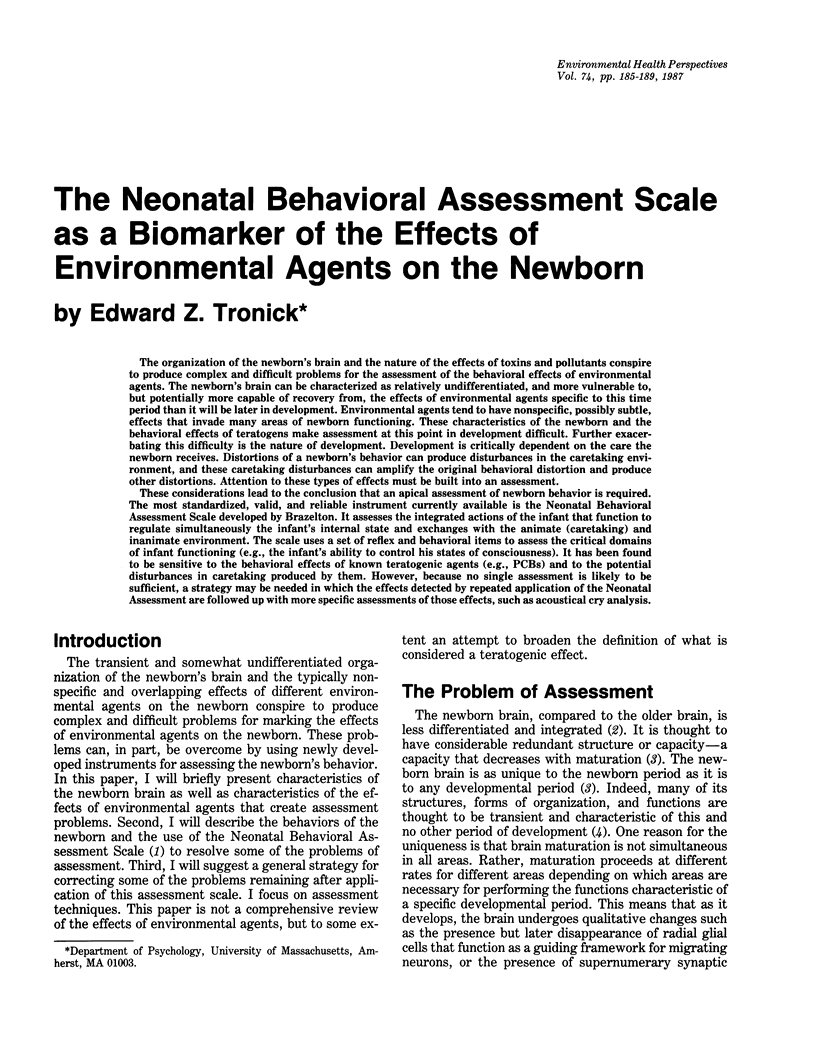
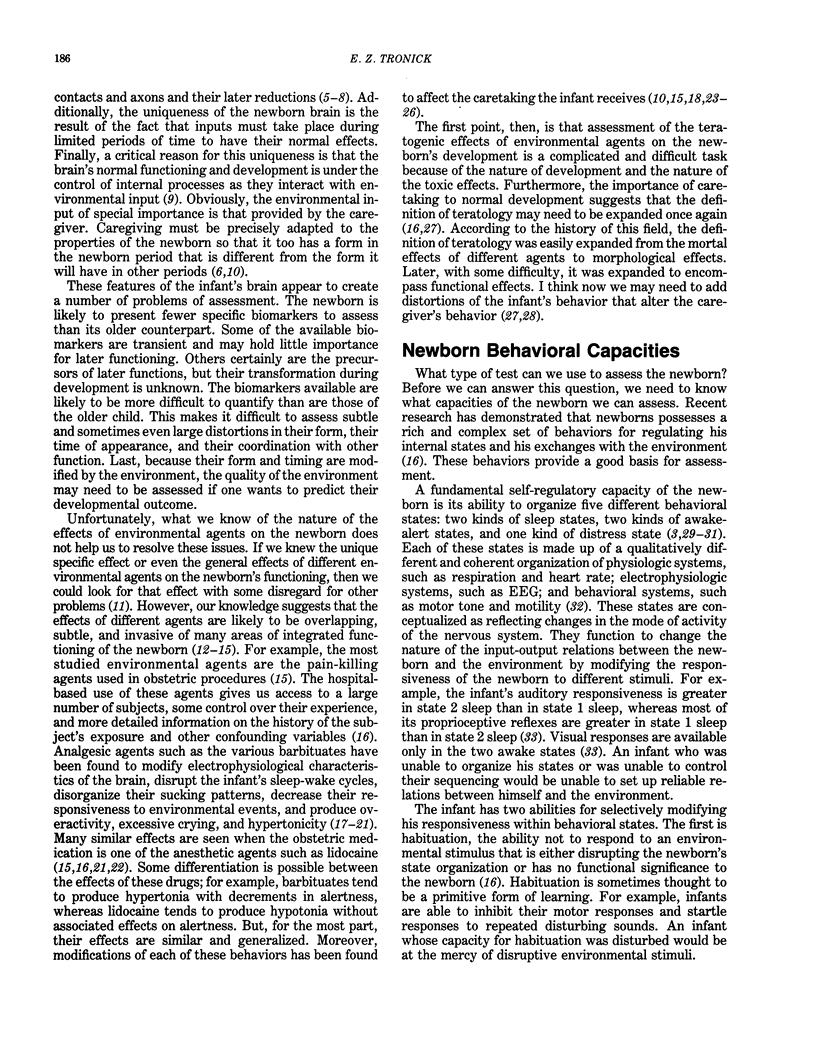
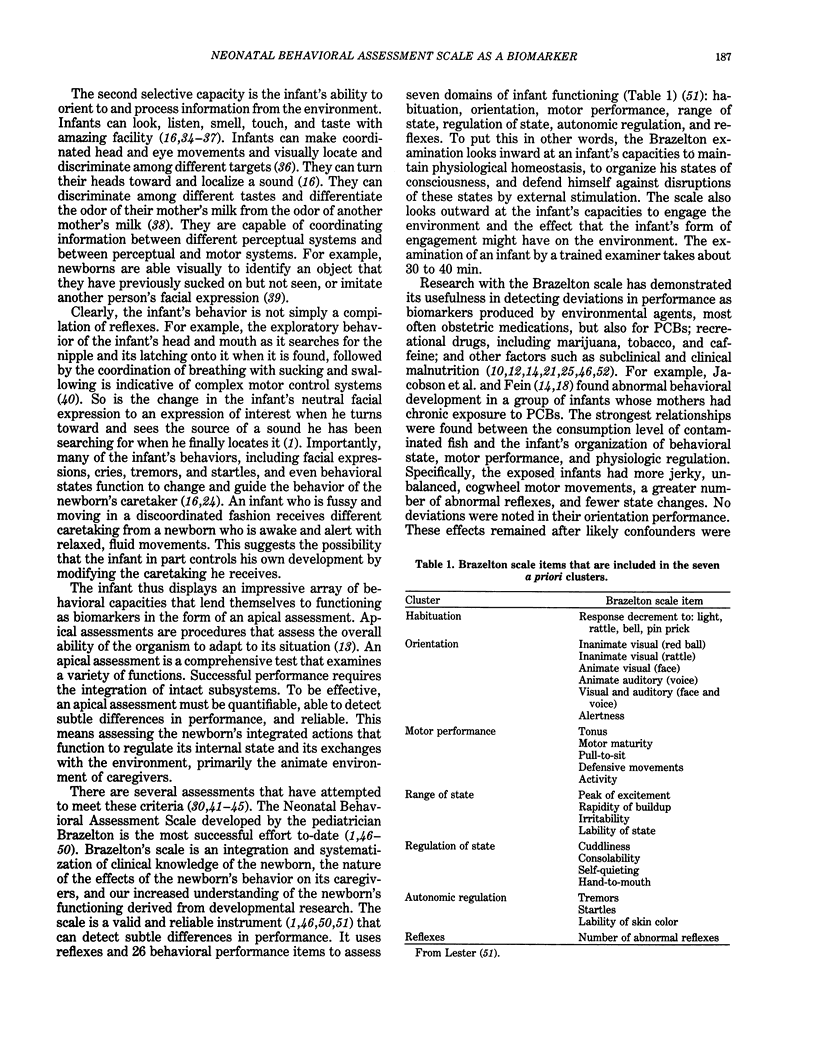
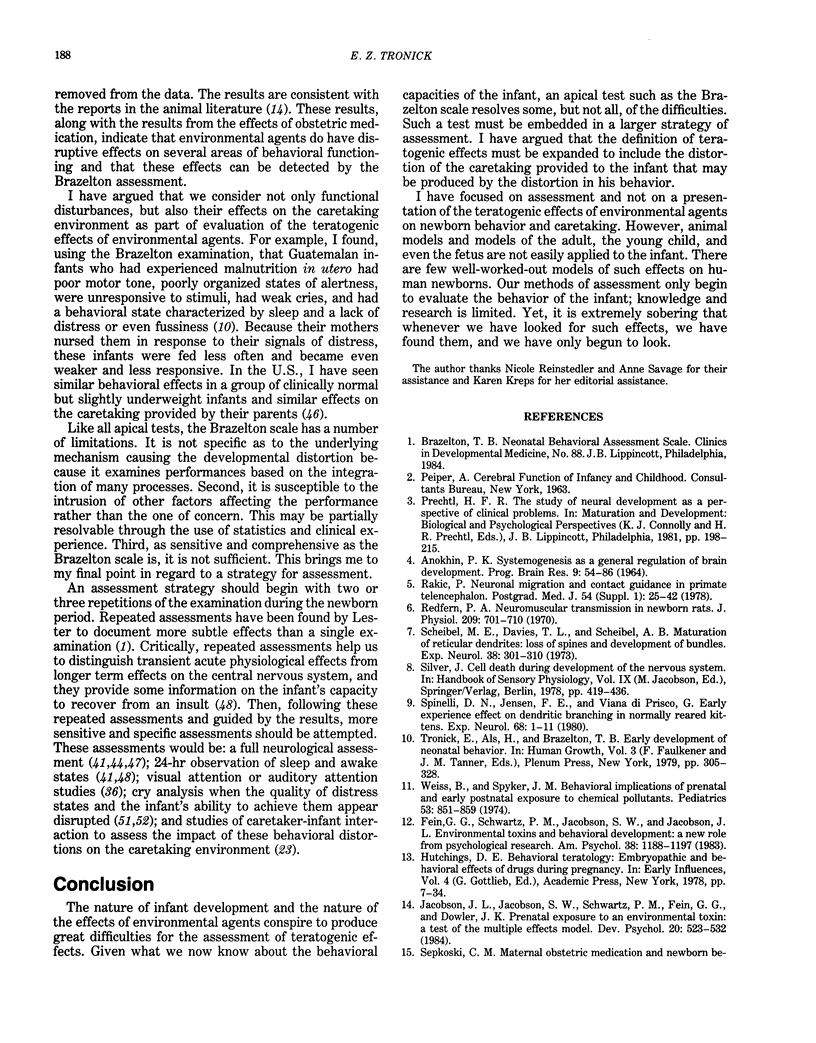
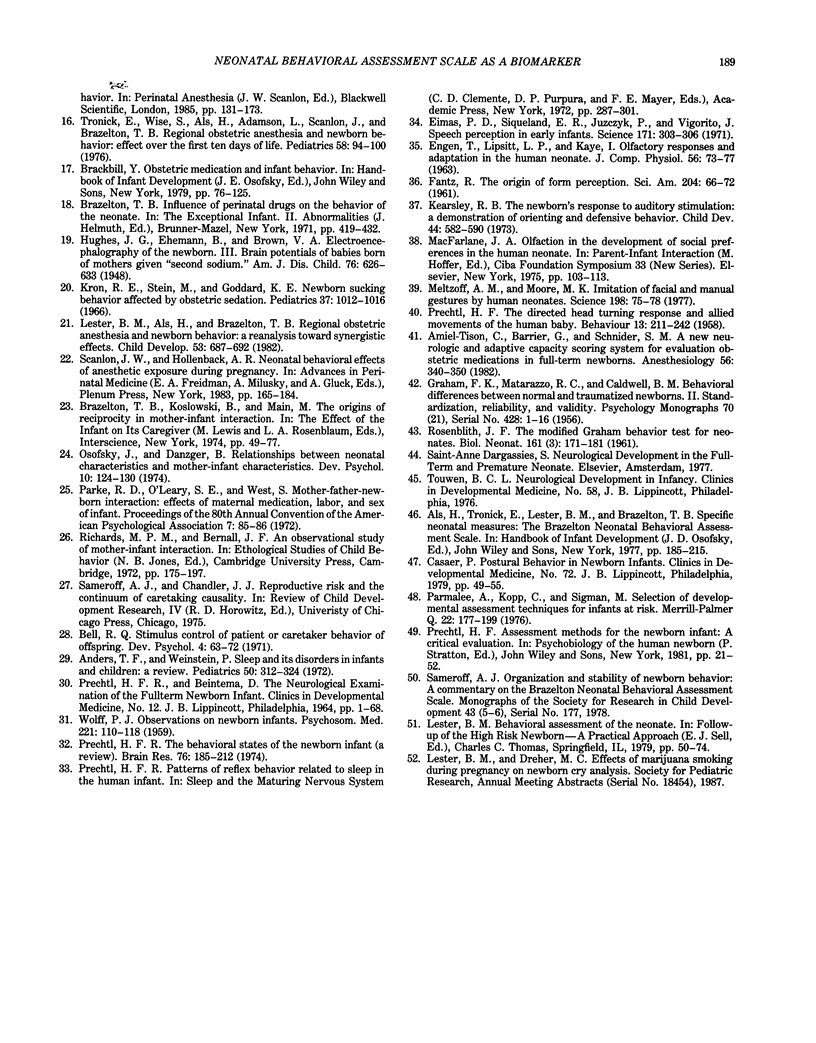
Selected References
These references are in PubMed. This may not be the complete list of references from this article.
- Als H., Tronick E., Lester B. M., Brazelton T. B. The Brazelton Neonatal Behavioral Assessment Scale (BNBAS). J Abnorm Child Psychol. 1977;5(3):215–231. doi: 10.1007/BF00913693. [DOI] [PubMed] [Google Scholar]
- Amiel-Tison C., Barrier G., Shnider S. M., Levinson G., Hughes S. C., Stefani S. J. A new neurologic and adaptive capacity scoring system for evaluating obstetric medications in full-term newborns. Anesthesiology. 1982 May;56(5):340–350. doi: 10.1097/00000542-198205000-00003. [DOI] [PubMed] [Google Scholar]
- Anders T. F., Weinstein P. Sleep and its disorders in infants and children: a review. Pediatrics. 1972 Aug;50(2):312–324. [PubMed] [Google Scholar]
- Eimas P. D., Siqueland E. R., Jusczyk P., Vigorito J. Speech perception in infants. Science. 1971 Jan 22;171(3968):303–306. doi: 10.1126/science.171.3968.303. [DOI] [PubMed] [Google Scholar]
- FANTZ R. L. The origin of form perception. Sci Am. 1961 May;204:66–72. doi: 10.1038/scientificamerican0561-66. [DOI] [PubMed] [Google Scholar]
- Fein G. G., Schwartz P. M., Jacobson S. W., Jacobson J. L. Environmental toxins and behavioral development. A new role for psychological research. Am Psychol. 1983 Nov;38(11):1188–1197. doi: 10.1037//0003-066x.38.11.1188. [DOI] [PubMed] [Google Scholar]
- Kearsley R. B. The newborn's response to auditory stimulation: a demonstration of orienting and defensive behavior. Child Dev. 1973 Sep;44(3):582–590. [PubMed] [Google Scholar]
- Kron R. E., Stein M., Goddard K. E. Newborn sucking behavior affected by obstetric sedation. Pediatrics. 1966 Jun;37(6):1012–1016. [PubMed] [Google Scholar]
- Lester B. M., Als H., Brazelton T. B. Regional obstetric anesthesia and newborn behavior: a reanalysis toward synergistic effects. Child Dev. 1982 Jun;53(3):687–692. [PubMed] [Google Scholar]
- Macfarlane A. Olfaction in the development of social preferences in the human neonate. Ciba Found Symp. 1975;(33):103–117. doi: 10.1002/9780470720158.ch7. [DOI] [PubMed] [Google Scholar]
- Meltzoff A. N., Moore M. K. Imitation of facial and manual gestures by human neonates. Science. 1977 Oct 7;198(4312):75–78. doi: 10.1126/science.198.4312.75. [DOI] [PubMed] [Google Scholar]
- Prechtl H. F. The behavioural states of the newborn infant (a review). Brain Res. 1974 Aug 16;76(2):185–212. doi: 10.1016/0006-8993(74)90454-5. [DOI] [PubMed] [Google Scholar]
- Rakic P. Neuronal migration and contact guidance in the primate telencephalon. Postgrad Med J. 1978;54 (Suppl 1):25–40. [PubMed] [Google Scholar]
- Redfern P. A. Neuromuscular transmission in new-born rats. J Physiol. 1970 Aug;209(3):701–709. doi: 10.1113/jphysiol.1970.sp009187. [DOI] [PMC free article] [PubMed] [Google Scholar]
- Scheibel M. E., Davies T. L., Scheibel A. B. Maturation of reticular dendrites: loss of spines and development of bundles. Exp Neurol. 1973 Feb;38(2):301–310. doi: 10.1016/0014-4886(73)90154-4. [DOI] [PubMed] [Google Scholar]
- Spinelli D. N., Jensen F. E., Viana Di Prisco G. Early experience effect on dendritic branching in normally reared kittens. Exp Neurol. 1980 Apr;68(1):1–11. doi: 10.1016/0014-4886(80)90063-1. [DOI] [PubMed] [Google Scholar]
- Tronick E., Wise S., Als H., Adamson L., Scanlon J., Brazelton T. B. Regional obstetric anesthesia and newborn behavior: effect over the first ten days of life. Pediatrics. 1976 Jul;58(1):94–100. [PubMed] [Google Scholar]
- WOLFF P. H. Observations on newborn infants. Psychosom Med. 1959 Mar-Apr;21(2):110–118. doi: 10.1097/00006842-195903000-00004. [DOI] [PubMed] [Google Scholar]
- Weiss B., Spyker J. M. The susceptibility of the fetus and child to chemical pollutants. Behavioral implications of prenatal and early postnatal exposure to chemical pollutants. Pediatrics. 1974 May;53(5):851–859. [PubMed] [Google Scholar]


